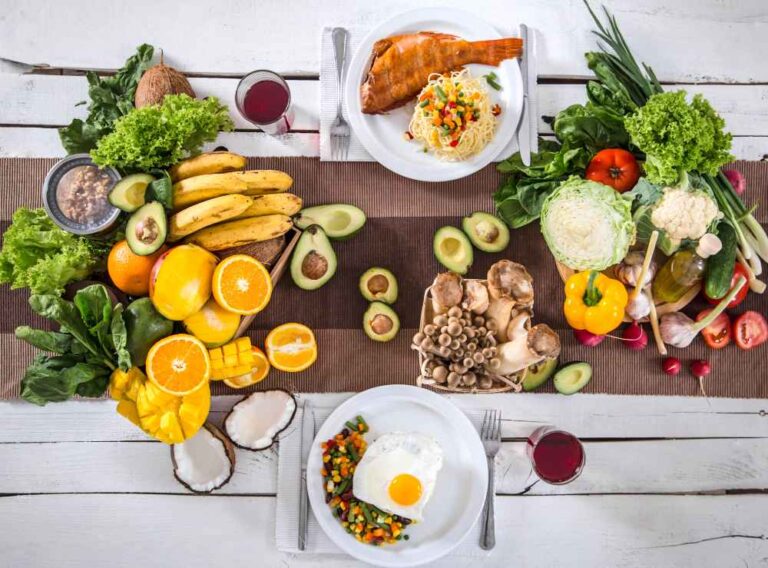
When you’re trying to eat healthier or lose weight, it’s easy to fall into the trap of counting calories without paying attention to nutrition. However, not all low-calorie foods are created equal—and not all high-calorie foods should be avoided.
The key is balance: pairing nutrient-dense, calorie-rich foods like avocados and nuts with low-calorie, fiber- and water-rich foods like fruits and vegetables. This strategy makes meals more satisfying while still supporting your wellness or weight-loss goals.
Below, we explore 22 delicious foods that are not only low in calories but also rich in vitamins, minerals, and antioxidants.
🥝 Fruits: Naturally Sweet and Nutrient-Dense
1. Apples (62 calories per cup)
Crisp and juicy, apples are packed with fiber, vitamin C, and antioxidants. Eat them with the skin for the full benefit.
2. Clementines (35 calories per fruit)
These small citrus fruits are high in vitamin C and make a perfect grab-and-go snack.
3. Papaya (68 calories per small fruit)
Papayas support digestion and are rich in vitamin C, folate, and potassium.
4. Strawberries (53 calories per cup, sliced)
Low in sugar but high in vitamin C and antioxidants, strawberries are excellent for heart health and make a great snack or dessert topping.
5. Tomatoes (27 calories per cup, cherry tomatoes)
Technically a fruit, tomatoes are rich in lycopene, a powerful antioxidant linked to heart health and cancer prevention.
6. Watermelon (46 calories per cup, balled)
High in water content, watermelon is hydrating and sweet—perfect for hot weather.
🥬 Leafy Greens: Low in Calories, High in Nutrients
7. Chard (7 calories per cup, raw)
This dark leafy green is especially high in vitamin K and supports bone health.
8. Kale (49 calories per cup, cooked)
Rich in provitamin A, C, and K, kale is a superfood often added to smoothies, salads, and stir-fries.
9. Spinach (7 calories per cup, raw)
Spinach is loaded with iron, folate, and eye-friendly carotenoids like lutein and zeaxanthin.
10. Iceberg Lettuce (8 calories per cup)
While not as nutrient-dense as other leafy greens, iceberg lettuce still provides folate and vitamin K and is incredibly hydrating.
🥕 Root Vegetables: Crunchy, Colorful, and Satisfying
11. Radishes (19 calories per cup)
These colorful veggies add crunch and a peppery bite to dishes and are high in vitamin C.
12. Beets (74 calories per cup, cooked)
Beets are packed with antioxidants and compounds that may support heart and liver health.
13. Turnips (34 calories per cup, cooked)
Mild in flavor, turnips are great in soups and offer vitamin C and fiber.
14. Rutabaga (51 calories per cup, cooked)
A starchy root that’s lower in carbs than potatoes, rutabagas are a source of potassium, calcium, and magnesium.
15. Onions (70 calories per medium, cooked)
Onions contain powerful compounds that support heart and immune health.
🥦 Cruciferous Vegetables: Cancer-Fighting Superstars
16. Broccoli (54 calories per cup, cooked)
Broccoli provides more than 100% of your daily vitamin C needs and is rich in fiber.
17. Brussels Sprouts (70 calories per cup, cooked)
Mini cabbages packed with vitamin C, antioxidants, and potential cancer-fighting compounds.
18. Cauliflower (40 calories per cup, cooked)
Versatile and mild, cauliflower is often used in low-carb substitutes like cauliflower rice or pizza crusts.
19. Cabbage (22 calories per cup, shredded)
Great raw or fermented (as sauerkraut), cabbage offers fiber, vitamin C, and gut-friendly probiotics.
🥒 Water-Rich Vegetables: Hydration + Satiety
20. Celery (17 calories per cup)
Celery is mostly water but contains some fiber and vitamin K. Pair it with nut butter for a more filling snack.
21. Cucumbers (8 calories per half-cup)
Cool and crisp, cucumbers are excellent in salads or infused waters. They support hydration and digestive health.
🍽️ Putting It All Together: How to Use These Foods
While low-calorie foods are excellent on their own, they shine brightest when paired with more nutrient-dense options. Here’s how to make the most of them:
-
Snack smart: Swap chips for cucumber slices with hummus or celery with almond butter.
-
Upgrade meals: Replace refined carbs with cauliflower rice or spiralized zucchini.
-
Build balanced plates: Fill half your plate with leafy greens and veggies, and add moderate portions of healthy fats and proteins like grilled chicken, lentils, eggs, or avocado.
🧠 Final Thoughts: Calories Are Just One Part of the Picture
Low-calorie foods can help reduce total energy intake and support weight loss, but that doesn’t mean high-calorie foods are “bad.” Foods like nuts, seeds, oily fish, and eggs are higher in calories yet rich in essential nutrients.
Focus on nutrient density—not just calorie counts. A healthy eating pattern includes a wide range of whole foods, combining the filling power of low-calorie fruits and vegetables with the staying power of healthy fats and proteins.
By making smart food swaps and balancing your meals, you can nourish your body, manage your weight, and enjoy the process.
Ready to eat smarter? Start by adding just one or two of these low-calorie foods to your meals each day—and enjoy the benefits of feeling full, energized, and nourished






